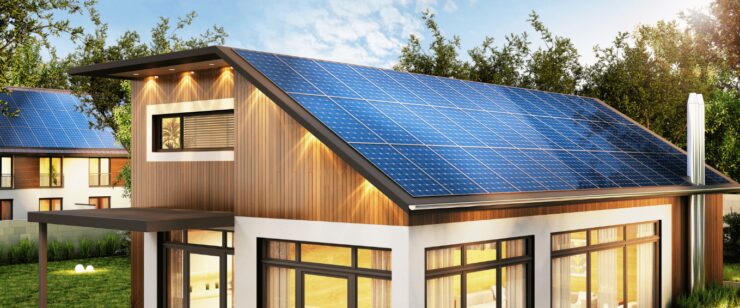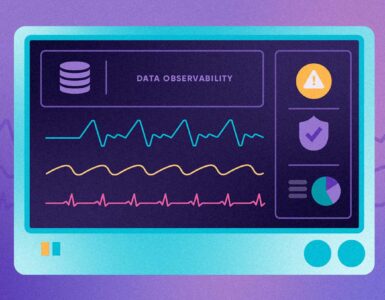There are billions of homes all across the planet, and unfortunately, only a tiny fraction of these homes are eco-friendly.
Instead, most homes consume resources such as electricity and natural gas at inefficient rates, which is bad for the planet and bad for your wallet. Homeowners are wasting money on utilities due to poor housing design.
While more and more homebuilders are specializing in the construction of eco-friendly houses, it doesn’t solve the problem of the billions of existing homes that aren’t eco-friendly.
Luckily, there are some relatively simple steps you can take as a homeowner to create a more energy-efficient home. When you invest in your home this way, you can feel good about your lifestyle, knowing that it’s causing much less harm to the planet.
Plus, it will save you money every month, so you have more to spend on the things that are important to you. Keep reading to learn more about creating energy-efficient housing.
1. Eco-Friendly Houses are Powered by the Sun
Wondering how to be eco-friendly? Investing in solar power is one of the best ways to reduce your dependency on fossil fuels. With solar power, you instead power your daily lifestyle with the free, harmless, renewable rays of the sun.
They come every day, and harvesting these rays and converting them into electricity is harmless for the planet. There aren’t any greenhouse gases released in the process.
If you plan accordingly and get enough solar panels, you’ll be able to eliminate your electricity bill. This can save you thousands of dollars per year, and pay back your initial investment in just a few years.
Plus, there are many incentives available that can make the cost of installation more affordable. The solar tax credit is one of the best ways to lower your cost, but it’s only available for a couple more years, so don’t wait.
Many areas also offer net metering programs. This happens when your solar panels are connected to your traditional electricity grid.
If you over generate electricity, such as on sunny summer days, you can sell it back to your power company. Then, on days when you under-generate electricity, such as in the winter, or on cloudy days, you’ll need to draw power from the grid.
But instead of paying for it, you use up any credits’ you’ve earned from selling to them in the first place. Solar energy has never been more affordable and more attractive.
2. Improve Insulation
Wondering how to save energy once you start generating clean energy? Improving the insulation in your home is the most effective way of reducing your power consumption.
When your home is poorly insulated, hot air will get into your home in the summer, requiring you to use your air conditioner constantly. In the winter, cold air will be getting into your home and warm air will escape. Then, it becomes an endless game of running your furnace and wasting energy.
Instead, just improve your home’s insulation. Have an expert inspect your attic and added insulation if necessary. Most energy loss happens through the roof.
While you’re at it, consider replacing your roof altogether. Old roofing materials can also lead to energy inefficiency. Consider a roofing material that reflects the sun’s rays away, rather than absorbs them.
Your windows and doors are the next culprits when it comes to energy loss. Gaps around the windows and doors, along with thin, single-layer glass are terrible for your home.
Invest in new exterior doors and energy-efficient windows, and watch your utility bills plummet. You’ll also enjoy the equity that these upgrades will add to your home’s value.
3. Install a Smart Thermostat
Old thermostats have two settings; on and off. This isn’t very efficient.
Instead, upgrade to a programmable thermostat. These let you set the exact temperature you’d like your home to be. You can easily adjust depending on the time of day.
For example, in the winter, you might want it to be 70 degrees while you are awake. But at night, since you are under warm blankets, you can lower the thermostat to 65 degrees to save money, yet still, be safe and comfortable.
Programmable thermostats can also be controlled with an app on your smartphone. So if you leave the house and forgot to lower the temperature, you can do so from anywhere.
4. Efficient Laundy Routines
Modern laundering practices waste tons of energy. One of the most wasteful is washing your laundry in warm or hot water. Most of the energy used during the laundering process is by heating water.
Instead, wash in cold water. It gets the job done just as effectively, uses far less energy, saves you money, and protects your clothing. Hot water will deteriorate clothing much faster, leading you to buy new clothing more frequently.
If you really want to make your home more energy-efficient, consider hand-drying your laundry. Skipping out on the dryer altogether can save you a lot of money over the course of a year. Sure, it takes more time to hand dry clothing, but we all need simple routines in life that encourage us to slow down regularly.
5. LED Lightbulbs
One of the easiest upgrades you can make to your home is replacing all your old incandescent lightbulbs with newer LED lightbulbs. LED lightbulbs last way longer and use a fraction of the electricity as incandescent lights.
Plus, they’ve never been more affordable. While still more expensive, the price of LED bulbs is comparable to other types. Replacing every light bulb in your home today will start saving you money right away. You also won’t need to replace a lightbulb for the next 10 years.
Upgrade Your Home Today
While it would be great if we could pay an architect and a contractor to construct a brand new, energy-efficient home that uses natural, efficient building materials, it’s out of reach for most people. Luckily, there are easy steps that every homeowner can take to produce more eco-friendly houses.
Don’t wait to make upgrades. Every day that you wait is wasting money and harming the planet. Invest in your home today and reap the rewards tomorrow.
Looking for more tips like this? Visit our blog today to keep reading.




























